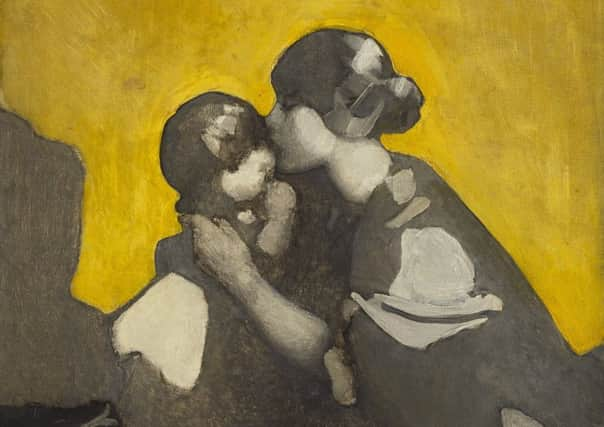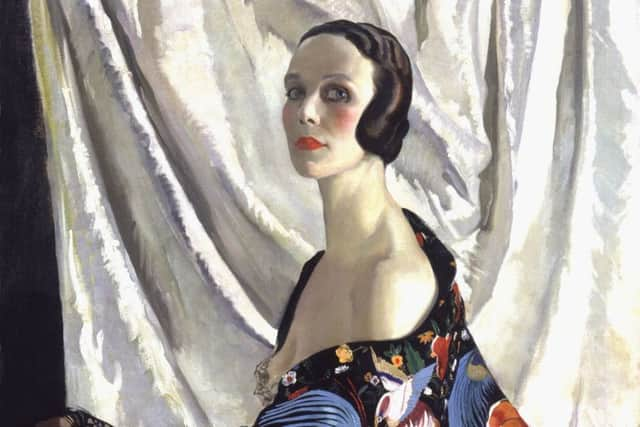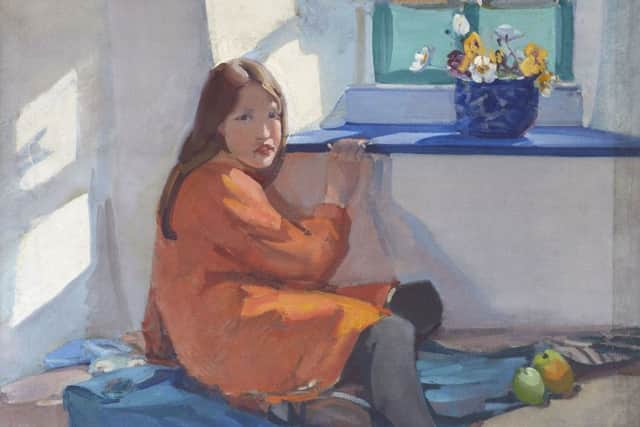Art review: Modern Scottish Women, Edinburgh


Modern Scottish Women: Painters and Sculptors 1885-1965 | Rating: *****
Scottish National Gallery of Modern Art, Edinburgh
There is no such thing as a woman artist. There are only two kinds of artist – bad and good.” So said Ethel Walker, one of the artists in Modern Scottish Women: Painters and Sculptors 1885-1965. Sadly however, though talent is no part of gender, success is a function of opportunity. Handprints suggest the painters of the caves were women, but only recently have women artists enjoyed equal opportunities with men. How much we have missed in consequence this show bears witness. The 80 years the show covers were the years the battle was finally won. In 1885 Fra Newbery was appointed Director of Glasgow School of Art and under his leadership, women students flourished. (Patrick Geddes may have been Newbery’s inspiration, however.) 1965 was the year Anne Redpath died. In success and reputation, she was the equal or superior of any of her male colleagues. Her still life, The Indian Rug, is one of the classics of modern Scottish art.


Advertisement
Hide AdAdvertisement
Hide AdMargaret Macdonald Mackintosh’s lovely watercolour, The Mysterious Garden, represents the first and most brilliant generation of Fra Newbery’s students. If her career, like that of Jessie M King, tended to confirm the prejudice that women’s talents were best deployed in the decorative and applied arts, Bessie MacNicol and Nora Neilson Gray, also Newbery’s students, defied that assumption. MacNicol was a wonderful painter of dappled light. Shamefully, however, she is not properly represented in the national collection, though her master (mistress?) piece, Vanity, was on the market a little while ago. More happily Gray’s strikingly modern Mother and Child was acquired recently.
There were successful Scottish women artists before 1885, however. Indeed, Phoebe Traquair was well established as an artist by then while the earliest picture here and one of the most striking, Flora Macdonald Reid’s remarkable Fieldworkers, dates from 1883, rather undermining the logic of the start date. Traquair is represented here by The Awakening, a dreamlike illustration to a poem by Rossetti. Reid’s picture, a luminous study in sunlight, takes inspiration from a different branch of Pre-Raphaelitism, combining with great originality Holman Hunt’s high-coloured naturalism with Impressionist handling. Reid trained in Edinburgh at the Trustees Academy. Dorothy Johnstone was the star pupil in the first generation of the new Edinburgh College of Art which, with the same staff and curriculum, replaced the old-established Academy. In September Sunlight Johnstone paints with the fluency of Raeburn and the palette of Peploe or Cadell. Her portrait of her friend and fellow artist Anne Finlay, her face in shadow, bare shoulders catching the light and dressed in emerald green, white and scarlet, is the signature image of the show.
Johnstone’s painting of a little girl called Marguerite is dated 1912, which makes her the artistic contemporary of the Colourists Cadell and Hunter, whose careers really only took off around then. Johnstone’s friend Cecile Wallon’s lovely double portrait of Eric Robertson, Walton’s future husband and Mary Newbery, daughter of Fra Newbery, is from the same year. (Walton’s self-portrait, Romance, which should have been the key picture here, is being exhibited elsewhere.) Both Johnstone and Walton illustrate a sad feature of this show: how many of these artists were denied full careers by their circumstances. When she married, Dorothy Johnstone was forced to relinquish her post at Edinburgh College of Art. The Marriage Bar, a law worthy of the Taliban, not repealed till 1945, barred married women from teaching. Walton ended her career, not as a painter granted the success she so manifestly deserved, but as director of children’s programmes for the BBC.
In the war years in Glasgow, women dominated the circle round JD Fergusson. Isabel Babianska represents them here, but it was younger artists like Joan Eardley and Bet Low who really built on the radical potential of those years. Bet Low’s portrait of a man smoking from 1945 is a worthy companion to a magnificent group of Eardley’s mature works. This includes a life size male nude that caused a furore when it was shown in 1955. The perceived impropriety of women in the life-class was always an issue, and also a real handicap to women students when drawing was the central discipline, and here was Eardley exhibiting a painting of a naked man. Scandal!


Nor were these artists following meekly where men had led. Eardley was a pioneer in the struggle to accommodate abstraction to the modes of landscape. Margaret Mellis, meanwhile, was a pioneer of pure abstraction. Her beautiful Relief from 1941 is perfectly self-confident in its modernity. So too is her lovely abstract White Painting. Josephine Haswell Miller’s still life Memories of the Sea, meanwhile, is precociously surrealist in inspiration. It is a poetic reflection on the mysterious disappearance in the Pacific of the ships of Admiral de la Perouse, France’s answer to Captain Cook.
Sculpture was supposed to be unsuitable for women, but Phyllis Bone’s bronze of Shere Khan, the tiger from the Jungle Book, pulsates with energy and so proves how daft that prejudice was. The power of Bone’s tiger also suggests why she had the honour of being the first woman elected Academician in the RSA. (It speaks volumes that that was only in 1944.) Alice Meredith Williams, the leading sculptor on the Scottish National War Memorial, also defied prejudice by working on a colossal scale. A photograph of her with the model of her mounted Crusader for the Paisley War Memorial, for which the maquette is on show, amply makes that point. Williams was Welsh, but certainly became a Scottish artist. Others are here on more dubious grounds. Doris Zinkeisen, for instance, although born in Scotland, never lived or worked here. It might be worth including her for her harrowing, eye-witness painting of victims of Belsen, but really birth has no more place in this story than gender does in talent. Ethel Walker and several others too, though born here were really not Scottish artists. They dilute the story while others, like Penelope Beaton, for instance, might have been included in their place. As a teacher at Edinburgh College of Art, Beaton was an inspiration to Elizabeth Blackadder and actively encouraged her and other women students to think professionally. Together, however, both those here and those left out fought with eventual success against often vicious prejudice and in doing so contributed immeasurably to the richness of our artistic tradition.
• Until 26 June